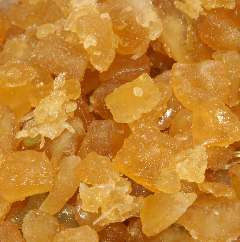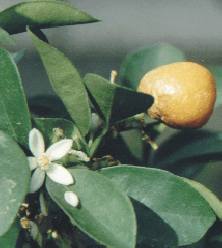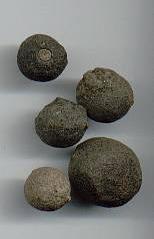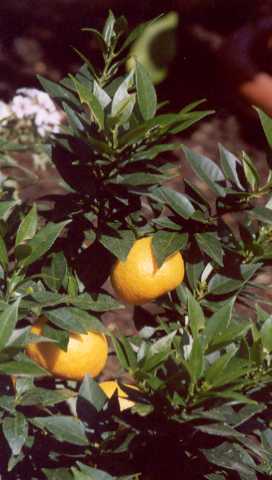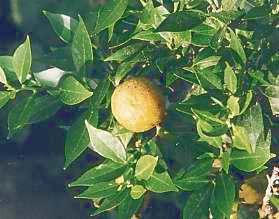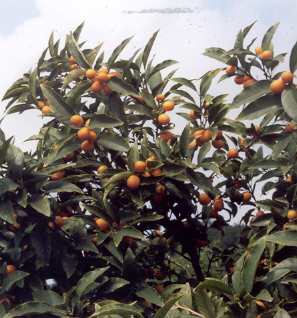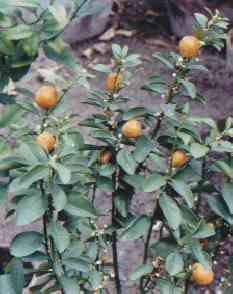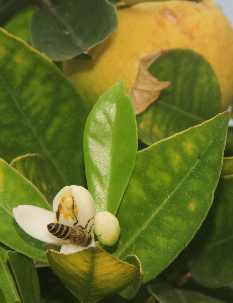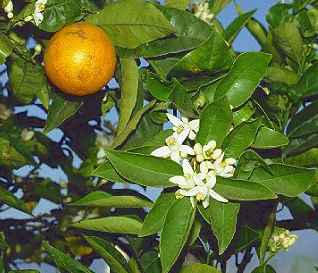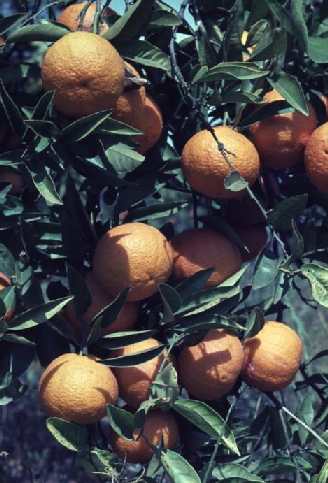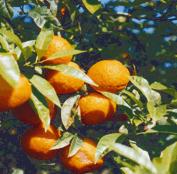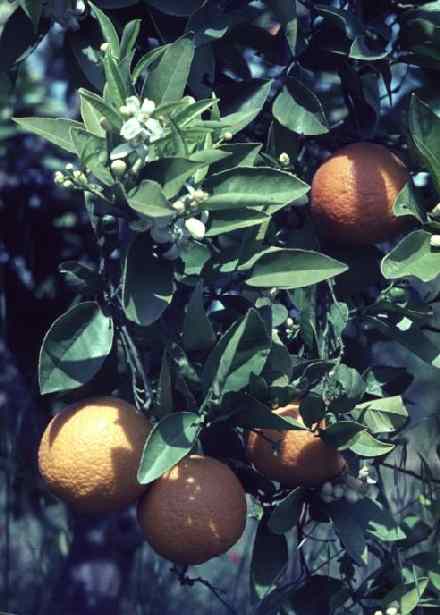
|
| Orange trees bear flowers and fruits simultaneously |

|
| Orange flowers and fruit |
Most important is the grated pericarp (peel), which is popular for European sweets and cakes, but is also worth trying for meat and fish dishes. Care must be taken not to overdose, otherwise dishes may taste perfumed and bitter. In Provence (Southern France), the spice mixture bouquet garni (see parsley) is usually enhanced with a piece of orange peel, often bitter orange which has a finer flavour.
Orange peel is, similar to lemon peel, capable of softening other taste impressions. Yet it is suited not only for fish but also for meat; especially the strong taste of viscera is made more pleasant. Again, careful dosage is essential. See tarragon for sauce maltaise, a butter-based sauce flavoured with fresh orange peel.
In the Far East, orange is not much used as a spice. Some Chinese recipes, however, use orange pulp, orange juice and particularly orange zest (or tangerine zest, which tastes very similar) to flavour meats; typically, the flavouring also includes hot chiles and numbing Sichuan pepper. A great example to illustrate this usage is au larm, a spicy beef stew from the highlands of Sichuan. Coarsely cubed beef is simmered in little water for two or three hours together with star anise, slices of fresh ginger and orange peel; a half hour before ready, soy sauce is added together with crushed Sichuan pepper and black pepper shortly fried in little oil. Au larm tastes very spicy and aromatic but not fiery–hot.
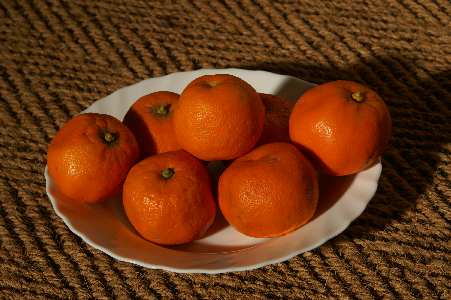
|
| Ripe bitter oranges |
Chinese master sauces (see cassia) are often flavoured with fresh or dried orange peel. Tangerine peel is part of the Japanese spice mixture shichimi togarashi (see Sichuan pepper); it can be substituted by orange peel, although the latter is slightly more bitter.
Orange blossom water (ma (az) zahr, ma (al) zer,
ma (al) zaher or any related spelling [ماء زهر,
ماء الزهر] often sold as flower water
)
is a fragrant product made by distilling (bitter) orange
buds and flowers; it is most popular in North Africa and West Asia, where it
is mostly used for salads and very sweet desserts. In Lebanon, it is
diluted with hot water and sugared to yield a digestive
(qahwa baida [قهوة بيضاء] white coffee
).
It is worth trying as an substitute for rose
water in European sweets; its unique fragrance may also
give an unusual touch to fruit drinks, syrups and ice cream.
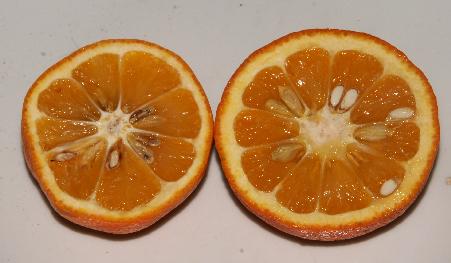
|
| Cut bitter orange fruits |
Bitter orange is important as the source of candied orange peel (orange succade), which is essential in European baking, and enjoys also high popularity in England, e. g. in form of marmalade, a kind of jam made from bitter oranges. Another British specialty containing bitter oranges is the famous Sauce Cumberland, whose recipe goes back to the 18.th century: Finely chopped bitter orange peel, orange juice, red wine and various fruit jellies are mixed together; salt, black pepper and pungent mustard paste are added up to taste. With its spicy and fruity taste, this sauce fits perfectly to venison. See also zedoary on the topic of bitter spices.
British cooks sometimes use orange juice as a flavouring for meat stews,
particularly venison. There are also Chinese (Cantonese) recipes taking
orange juice as the basis of sweet–sour sauces to be used for stir-fried meat.
Latin American cookery often uses the acidic juice of bitter oranges. It is
commonly employed in Caribbean or Brazil recipes, but it enjoys the highest
popularity in the Maya cooking (Yucatán peninsular in Southern
México). See annatto for the Mayan meat
marinades based on bitter orange juice (recado). As
bitter oranges can be difficult to come by, most cookbooks suggest a mixture of
sweet orange juice and lime juice as a substitute,
but I think that fresh grapefruit juice is even a better choice.
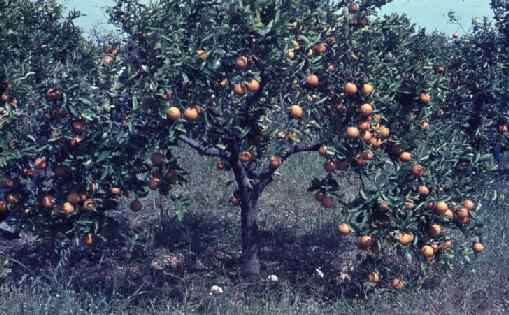
|
| Orange tree |
Essential oils obtained from bitter orange are sold as Oil of Neroli (most expensive; distilled from the blossoms), Oil of Petitgrain (from the leaves) or Oil of Orange (from the pericarp); only the latter’s fragrance is typical orange-like. These products are mostly called for by the perfume industry.
Last but not least, bergamot orange (a variety of bitter orange) must be mentioned. The extremely aromatic fruit peel is only rarely used for cooking (though worth trying), but more important to flavour tea; the British specialty Earl Grey owes its aroma to bergamot orange peel. This fruit must not be confused with the so-called bergamot, a close relative of lemon balm.
Orange fragrance is, in the plant kingdom, much more uncommon than lemon fragrance. Of all plants discussed in this
dictionary, only chameleon plant could be
named. Furthermore, orange-scented cultivars of some herbs have been
bred: peppermint and thyme.
